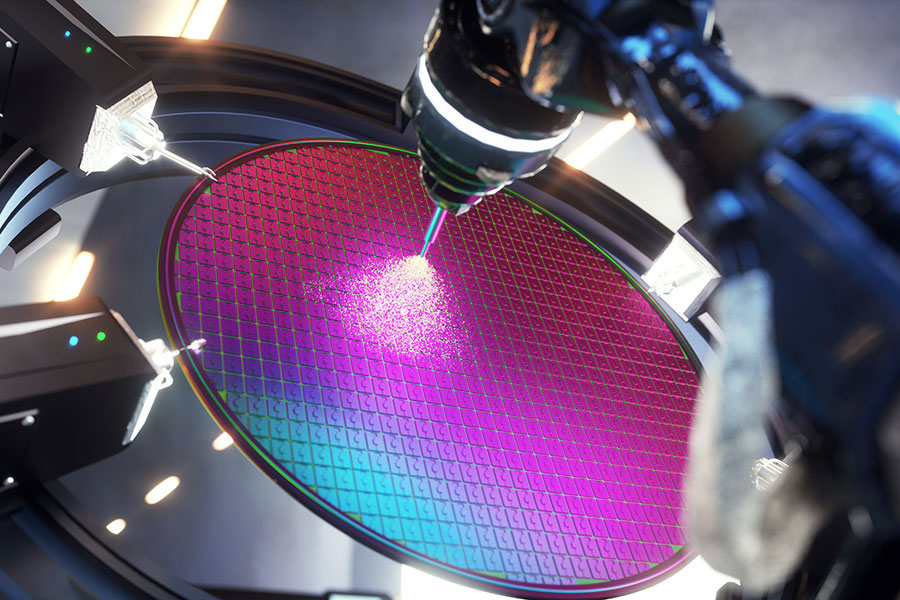The investment expenditure on chip manufacturing in the United States this year has exceeded the total of the previous 27 years
The Biden administration's Chip Act is injecting funds into chip manufacturing and construction at a historic pace. According to a recent report from the US Census Bureau, the growth rate of funding for computer and electrical manufacturing construction is fast, and the US government will increase the same amount of funding for the industry in 2024 alone as in the previous 27 years.
Martin Chorzempa, a senior researcher at the Peterson Institute, recently posted a tweet that drew attention to this surge and highlighted the rapid growth in spending over the past few years.
"The Chip Act is attracting a significant amount of investment. The United States is now moving towards increased investment in electronic manufacturing construction alone this year, just like the total investment from 1996 until the passage of the Chip Act in 2020 (when funds were not yet in place but investment had already begun)."
The investment growth began in 2021, but its explosive growth was due to a significant increase in funding for the Chip Act, a $280 billion spending plan passed by the Biden administration in 2022. The signing of this bill aims to help support the domestic semiconductor industry in the United States, which currently lacks advanced process chip manufacturing. Companies including Intel, Samsung, and Micron have all received billions of dollars in funding to establish new wafer manufacturing plants in the United States. Domestic research and development is also the main focus of this financing plan.
Investment funds such as chip manufacturing are expected to have a significant impact on chip production in the United States. A recent study by the Semiconductor Industry Association of America found that by 2032, domestic chip manufacturing capacity in the United States will triple, and it is expected to produce 30% of the world's cutting-edge chips by the same year. This expectation even exceeded the government's exaggerated goals; US Secretary of Commerce Gina Raymond boldly announced in February alone the goal of producing 20% of the world's cutting-edge chips, which is now expected to be far exceeded.
The construction of most new factories is still ongoing, such as Intel's new campus in Ohio. Intel's Ohio factory and many of its peers will be the main participants in this chip manufacturing plan, and the development of cutting-edge chip processes is expected to eventually enter the United States, further than the broader and simpler processes typically carried out in US wafer factories.
Despite the enormous cost, most wafer fabs in the United States have experienced significant delays in construction: Samsung, TSMC, and Intel have all been delayed by one year or more from their original plans. This is mainly attributed to inadequate regulation, which has also made the United States one of the countries/regions with the slowest construction speed of chip manufacturing facilities globally.
"The Chip Act is attracting a significant amount of investment. The United States is now moving towards increased investment in electronic manufacturing construction alone this year, just like the total investment from 1996 until the passage of the Chip Act in 2020 (when funds were not yet in place but investment had already begun)."
The investment growth began in 2021, but its explosive growth was due to a significant increase in funding for the Chip Act, a $280 billion spending plan passed by the Biden administration in 2022. The signing of this bill aims to help support the domestic semiconductor industry in the United States, which currently lacks advanced process chip manufacturing. Companies including Intel, Samsung, and Micron have all received billions of dollars in funding to establish new wafer manufacturing plants in the United States. Domestic research and development is also the main focus of this financing plan.
Investment funds such as chip manufacturing are expected to have a significant impact on chip production in the United States. A recent study by the Semiconductor Industry Association of America found that by 2032, domestic chip manufacturing capacity in the United States will triple, and it is expected to produce 30% of the world's cutting-edge chips by the same year. This expectation even exceeded the government's exaggerated goals; US Secretary of Commerce Gina Raymond boldly announced in February alone the goal of producing 20% of the world's cutting-edge chips, which is now expected to be far exceeded.
The construction of most new factories is still ongoing, such as Intel's new campus in Ohio. Intel's Ohio factory and many of its peers will be the main participants in this chip manufacturing plan, and the development of cutting-edge chip processes is expected to eventually enter the United States, further than the broader and simpler processes typically carried out in US wafer factories.
Despite the enormous cost, most wafer fabs in the United States have experienced significant delays in construction: Samsung, TSMC, and Intel have all been delayed by one year or more from their original plans. This is mainly attributed to inadequate regulation, which has also made the United States one of the countries/regions with the slowest construction speed of chip manufacturing facilities globally.